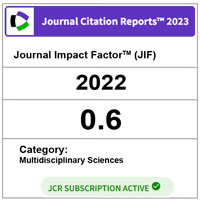Recognition of Simple Splicing Systems using SHAutomaton
DOI:
https://doi.org/10.11113/mjfas.v4n2.41Keywords:
Splicing system, Splicing language, SH-automaton, Maximal firm subwords, Regular expression,Abstract
Splicing language is the language which results from a splicing system. Splicing system was first introduced by Tom Head in 1987 as the mathematical model of systems of restriction enzymes acting on initial DNA molecules. Splicing languages are closely related to automata theory. Simple splicing systems can be recognized by SH-automata diagrams due to the regularity of splicing languages. SH-automaton defines exactly one language which is the language generated by the simple splicing system. In this paper, the concept of firm and maximal firm subwords are introduced. Some examples are then given to illustrate the maximal firm subwords of a word in a simple splicing system. Taking the SH-automata concept, which is a short compact way of encoding normal non-deterministicautomata in the special case of SH systems, the maximal firm subwords of the initial words of an SH systems serve as the labels for the associated SH-automaton. Some examples which will show the maximal firm subwords of the words in the initial set I, the regular expression for the language generated by the given splicing system and the simplest non-deterministic automaton that recognizes the corresponding splicing system are also given
References
T. Head, Formal Language Theory and DNA: An Analysis of the Generative Capacity of Specific Recombinant Behaviors, Bulletin of Mathematical Biology, 49 (1987) 737-759.
E. G. Laun, Constants and Splicing Systems, Ph.D. Thesis, State University of New York at Binghamton, 1999.
R. W. Gatterdam, Splicing Systems and Regularity, International Journal of Computer Math, 31 (1989) 63-67.
P. Linz, An Introduction to Formal Languages and Automata, third ed., Jones and Bartlett Publishers Inc, USA, 2001.
D. Kelley, Automata and Formal Languages, Prentice-Hall Inc, USA, 1995.
M. V. Lawson, Finite Automata, Chapman & Hall/CRC, USA, 2004







